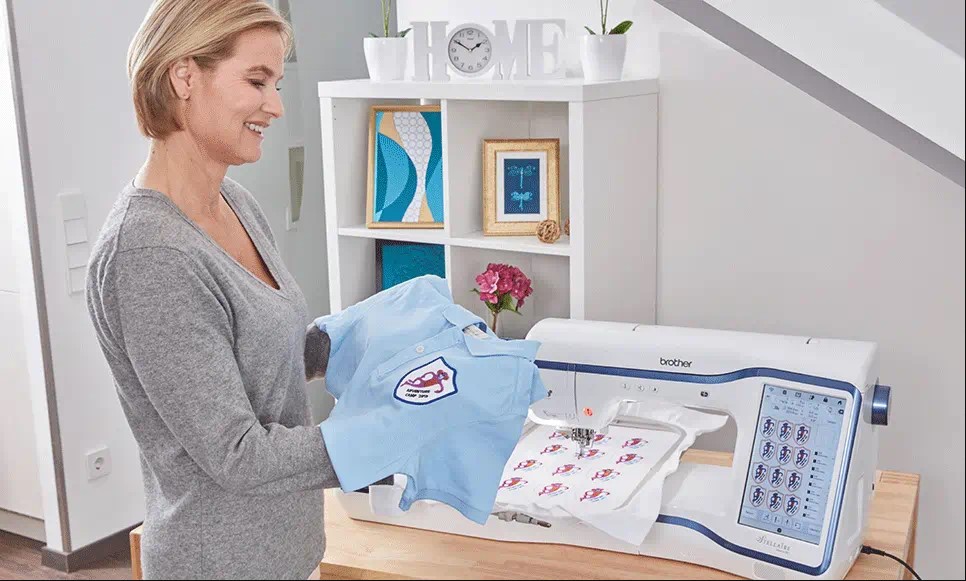
The art of embroidery has been around for centuries, but the way we create it has undergone a quiet revolution. Gone are the days of painstaking hand-stitching every detail—today’s embroidery blends traditional craftsmanship with cutting-edge technology. Digitized embroidery designs are where thread meets tech, turning simple images into intricate, stitch-perfect patterns that machines can replicate with precision. Whether you’re a hobbyist, a small business owner, or just someone who loves personalized crafts, understanding this fusion of art and technology opens up a world of creative possibilities.
What Are Digitized Embroidery Designs?
At its core, a digitized embroidery design is a digital file that tells an embroidery machine exactly how to stitch a pattern. Think of it like a musical score for a sewing machine—instead of notes, it contains coordinates for needle movements, thread colors, stitch types, and sequencing. Without this digital blueprint, even the most advanced embroidery machine wouldn’t know where to start.
But digitizing isn’t just about converting an image into stitches—it’s an art form in itself. A well-digitized design considers fabric type, stitch density, underlay, and tension to ensure the final product looks crisp, lasts long, and doesn’t pucker or warp. Poor digitizing, on the other hand, can lead to thread breaks, uneven textures, or designs that just don’t look right.
How Does Digitizing Work?
Turning an image into an embroidery file isn’t as simple as hitting “convert” and walking away. Here’s what really happens behind the scenes:
- Image Selection & Preparation
Not all designs stitch well. Bold, high-contrast graphics with clean lines work best—think logos, icons, or simplified illustrations. Photos or watercolor-style images often lose detail when stitched. - Stitch Mapping
A digitizer “draws” the design using different stitch types:- Satin stitches (smooth, shiny columns for borders and text)
- Fill stitches (tight, textured patterns for large areas)
- Running stitches (fine lines for details)
- Underlay stitches (hidden layers that stabilize the fabric)
- Testing & Refining
Even pros don’t get it perfect on the first try. A test stitch-out reveals issues like thread tension problems or areas that need more density. Adjustments are made until the design sews flawlessly.
Why Digitized Designs Beat Hand-Stitching for Modern Projects
Hand embroidery has its charm, but digitized designs bring advantages that are hard to ignore:
- Speed & Consistency – Machines replicate complex patterns in minutes, not hours, with perfect uniformity every time.
- Scalability – Once digitized, a design can be stitched in any size without losing quality.
- Complexity Made Easy – Multi-color gradients, photorealistic textures, and 3D effects are achievable with precision.
- Commercial Viability – Businesses can produce hundreds of identical embroidered items quickly and cost-effectively.
That said, the best digitized designs still retain an artisanal touch—digitizers often tweak stitch directions and textures to mimic the organic feel of hand embroidery.
The Tech Behind the Thread
Today’s digitizing software is smarter than ever. Tools like Wilcom, Hatch Embroidery, and Pulse IDS offer features like:
- Auto-digitizing (great for simple designs, but still needs human fine-tuning)
- Stitch simulation (preview how the design will sew before threading the machine)
- AI-assisted suggestions (algorithms recommend stitch types and densities)
But even with advanced tech, human expertise is irreplaceable. A skilled digitizer knows how to adjust for different fabrics—what works on denim might pucker on silk—and how to optimize designs for durability (like reinforcing high-wear areas on work uniforms).
Trends Shaping Digitized Embroidery
The industry isn’t standing still. Here’s what’s new and exciting:
- 3D Puff Embroidery – Raised designs that add dimension to hats and jackets.
- Glow-in-the-Dark & Metallic Threads – Digitizers now optimize files for specialty threads that shine or reflect light.
- Eco-Friendly Digitizing – Reducing thread waste and energy use by optimizing stitch paths.
- AR-Enabled Embroidery – Designs that interact with smartphones, like scannable logos that unlock digital content.
DIY vs. Professional Digitizing: Which Should You Choose?
If you love tinkering with software, DIY digitizing can be rewarding. Programs like Ink/Stitch (free) or Embrilliance (beginner-friendly) let you experiment. But for logos, intricate artwork, or bulk orders, professional digitizing is worth the investment.
Pros bring:
✔ Faster turnaround (often 24-48 hours)
✔ Fewer errors (no trial-and-error wasted materials)
✔ Specialty techniques (like appliqué or sequin integration)
Where to Find Quality Digitized Designs
Ready to start stitching? Here’s where to get top-notch files:
- Etsy & Creative Market (independent designers offering unique styles)
- EmbroideryDesigns.com (huge library of pre-digitized patterns)
- Custom digitizing services (for one-of-a-kind creations)
The Future: Where Thread and Tech Go Next
As machines get smarter, we’re seeing:
- Generative AI creating custom designs from text prompts
- Smart files that adjust stitch density based on fabric scans
- Biodegradable threads paired with eco-optimized digitizing
Yet, no matter how advanced tech gets, the magic still lies in the blend of human creativity and mechanical precision.
Stitching It All Together
Digitized embroidery designs are where tradition meets innovation. They preserve the beauty of stitched art while leveraging technology to make it faster, more precise, and more accessible than ever. Whether you’re embellishing a favorite jacket, launching a merch line, or just exploring a new hobby, understanding this process helps you create professional-quality work without the guesswork.
So, what will you stitch next? A personalized tote bag? A bold statement hat? With digitized designs, your imagination (and maybe your thread collection) is the only limit. Happy stitching!

